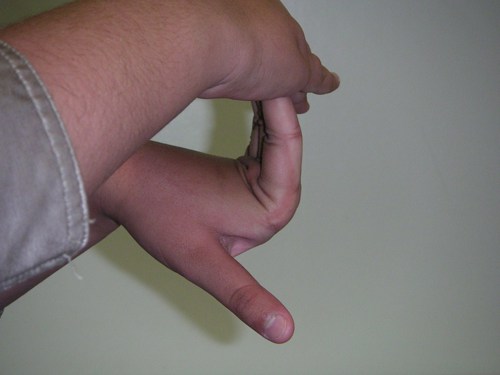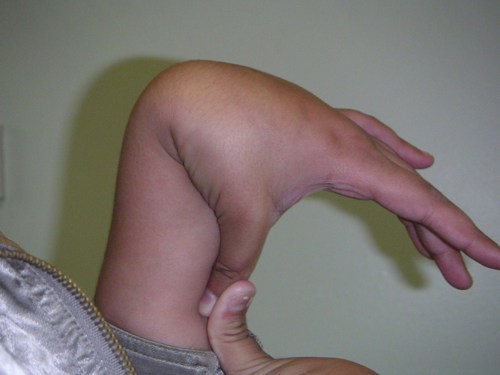Hypermobility
Hypermobility is a feature of development in healthy children i.e., the term reflects an increased range of movement compared to controls.
Hypermobility is more evident in young children, females and certain ethnic populations (e.g., Indian children are more flexible than white caucasian children).
Hypermobility is more prevalent in competitive dancers, gymnasts, athletes and swimmers and likely gives distinct advantage.
However, hypermobility can be associated with pain although this is controversial. It is important not to ascribe pain to hypermobility without considering other causes.
Hypermobility is also a feature of the inherited collagen disorders; these are rare but important, as individuals are at risk of retinal and cardiac complications and scoliosis. Such syndromes can be suspected by looking at the body habitus (look for tall stature, long fingers, wide arm span and high arched palate which suggest Marfan's syndrome), skin elasticity (easy bruising and paper thin scars which suggest Ehler's Danlos syndromes) and blue sclerae suggest osteogenesis imperfecta
Children and young people may complain of finger pain after handwriting or certain sporting activities or may describe 'clicky' joints.
Photo: Hyperextension of Fingers.

Photo: Hyperextension of Thumb.

Children and young people may be hypermobile only in specific areas, but these should be symmetrical and may or may not be associated with pain.
The diagnosis of hypermobility can often be made with confidence when the history and examination findings are as expected. Often simple reassurance is needed with advice to maintain sporting activities and ensure good muscle strength and core stability are optimised. Occasionally, advice from a paediatric physiotherapist can be useful, particularly in children struggling to return to usual activities.
Indications for referral include:
- Suspicion of inherited collagen syndromes (e.g., Marfans) - check body habitus, sclerae and skin.
- Pain and functional limitation.
- Asymmetrical joint involvement.
- Inflammatory joint or muscle disease is suspected - remember children with arthritis may also have hypermobility also.

